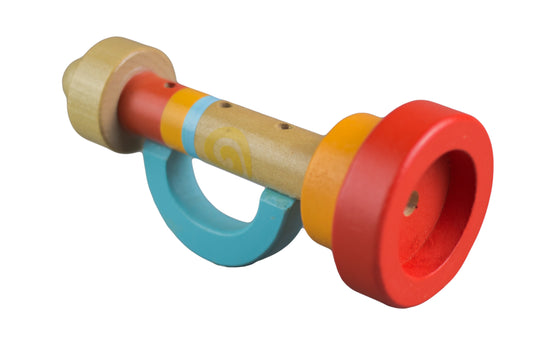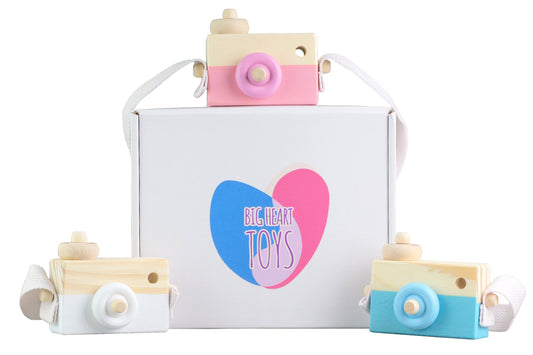Sensory bins are immersive play experiences that have captured the hearts and minds of children for their remarkable capacity to foster essential developmental skills.
From enhancing fine motor skills and stimulating creativity to promoting cognitive growth and emotional well-being, these sensory-rich containers open a world of opportunities for young minds to explore, learn, and flourish.
Whether you're a parent, caregiver, or educator, understanding the multifaceted advantages of sensory bins will inspire you to incorporate these engaging tools into your child's everyday learning and play.
What Are Sensory Bins?
Sensory bins are hands-on, interactive learning tools designed to engage children's senses and promote development. These bins typically consist of a container filled with a variety of materials, such as sand, rice, water beads, or thematic items like miniature toys.
Sensory bins create a stimulating, open-ended play experience where children can explore different textures, colors, and shapes, enhancing their sensory perception, fine motor skills, and cognitive abilities. These bins encourage imaginative play and problem-solving as children manipulate the contents, fostering creativity and emotional well-being.
How Do Children With Autism Benefit From Sensory Play?
Children with autism often benefit significantly from sensory play due to their unique sensory processing profiles. Sensory play provides a structured yet flexible environment for children with autism to explore and regulate their sensory experiences. This type of play offers a controlled space where children can engage with various textures and sensory stimuli, helping them regulate their sensory responses and reducing sensory overload and anxiety.
Sensory play also enhances concentration and attention span, which is vital for children with autism, encouraging better focus. Additionally, it allows children to manage their emotions, serving as a means of emotional expression and coping. Sensory bins can also serve as tools for behavior modeling, enabling children with autism to imitate play behaviors and social interactions they observe so they can improve their social skills.
These fun bins promote self-guided play — children make choices, set their own pace, and develop independence and decision-making skills. This structured yet open-ended nature of sensory play makes it an effective means of addressing sensory sensitivities and encouraging positive developmental outcomes. This makes sensory play a valuable tool for occupational therapists, educators, and parents working with children on the autism spectrum.
What Are the 10 Developments Benefits of Sensory Bins?
Sensory bins are a treasure trove of developmental benefits for children, offering the perfect blend of calm, education, and entertainment.
1. Improve Fine Motor Skills
Sensory bins are remarkable tools for improving fine motor skills in children. Through tactile exploration and hands-on manipulation, these bins offer a dynamic platform for skill development. Children engage in activities like pinching, grasping, and manipulating small objects, which enhances their ability to control and coordinate their hand movements with their visual perception, a fundamental aspect of fine motor skill development.
Sensory materials such as sand, rice, water beads, or playdough necessitate intricate finger movements, which, in turn, strengthen finger dexterity and control. Activities like stacking small objects, threading beads, and other precision-based tasks in sensory bins also promote fine motor control and precision.
Sensory bins make this skill-building journey enjoyable and engaging — children explore while honing their abilities, ensuring a holistic approach to fine motor development.
2. Support Language Skills
Sensory bins serve as a dynamic and engaging platform for fostering language development in young learners by creating an environment that encourages verbal expression and vocabulary expansion. As children engage with the various textures and materials in the bin, they naturally describe what they see, feel, or imagine, introducing them to new words and concepts. This play also prompts storytelling and narrative creation, allowing them to practice sequential language skills.
Through these discussions, questions, and social interactions, children learn how to converse and communicate. Additionally, the multisensory nature of sensory play reinforces the connection between words and sensory experiences, aiding language retention.
3. Encourage Social Interaction
Sensory bins create a dynamic and inclusive environment that promotes not only sensory exploration but also essential social interaction skills, including communication, cooperation, empathy, and teamwork. This collaborative aspect of sensory play contributes to children’s overall social development.
When little ones play with sensory bins together, they enjoy a shared experience and practice skills such as taking turns, playing cooperatively, problem-solving, and working together. Interaction like this helps children with autism explore pressure-free ways to connect with others and explore social relationships.
4. Promote Sensory Exploration
Sensory bins promote exploration by offering a captivating and multisensory platform for children to engage with various materials, textures, and objects. The open-ended nature of sensory play encourages curiosity and experimentation as children dig, pour, scoop, and manipulate the bin's contents.
5. Encourage Discovery
Hands-on interaction allows children to discover the properties and possibilities of different materials, fostering a natural desire to explore and understand their sensory environment. The immersive and tactile nature of sensory bins stimulates a sense of wonder, encouraging children to investigate and learn, all while having fun in an environment that encourages their innate sense of curiosity and discovery.
6. Aid Focus and Concentration
Sensory bins aid focus and concentration by offering an immersive sensory experience that captivates children's attention. The intriguing sensory stimulation and the need to closely examine and interact with various materials promote sustained engagement. The open-ended nature of sensory play allows children to choose their direction and pace, fostering deep concentration.
This type of play can be calming and regulating, further enhancing a child's ability to concentrate. In addition, the problem-solving opportunities presented within sensory activities require focused attention to figure out solutions, contributing to the development of concentration skills that benefit various aspects of a child's learning and daily life.
7. Boost Calming and Soothing Effects
Sensory bins can boost calming and soothing effects through various means. The tactile stimulation offered by sensory materials like sand or soft fabrics engages the sense of touch in a gentle, controlled manner, providing a calming sensation. For children sensitive to sensory stimuli, sensory bins offer a structured, predictable environment that aids in regulating sensory input, reducing feelings of overwhelm or anxiety.
Engaging with the contents of a sensory bin also fosters mindful focus, diverting attention from stressors. They have been shown to reduce stress hormones, promoting a sense of relaxation while serving as a safe outlet for emotional expression.
8. Foster Problem-Solving Skills
These bins foster problem-solving skills by presenting children with a range of challenges and puzzles within their sensory play. As they engage with the materials and objects, children must figure out how to stack items, pour materials, or achieve specific goals, encouraging them to think critically and develop strategies.
Because there's no "right" way to interact with the materials, the bins promote creativity and divergent thinking in problem-solving.
9. Develop Creativity and Imagination
Sensory bins are powerful tools for developing creativity and imagination in children. These open-ended play experiences encourage kids to explore, experiment, and think outside the box. Playing with a diverse array of materials and objects inspires children to invent their own stories, scenarios, and games, fostering imaginative play.
The absence of fixed rules allows for unlimited possibilities, stimulating creativity as children devise unique ways to interact with the sensory contents. The tactile and sensory nature of the bins engages multiple senses, enhancing the sensory-rich experience and sparking imaginative thinking. Through educational constructive play with a simple sensory bin, children feel free to invent, explore, and express themselves.
How Can Sensory Bins Be Made More Effective for Children With Autism?
To make sensory bins more effective for children with autism, it's essential to tailor the experience to their unique sensory preferences and needs. Keep individual preferences in mind. Autism spectrum disorder varies widely, so understanding each child's sensory sensitivities and preferences is key to crafting an appropriate sensory bin.
Incorporating their interests into the sensory experience can significantly boost engagement. Whether it's their fascination with specific textures, colors, or themes, aligning the sensory bin's content with their interests makes it more appealing and relevant.
Creating a calm environment is equally important, as children with autism may be sensitive to sensory input. Reducing unnecessary distractions and providing a quiet, comfortable space can enhance the effectiveness of the sensory bin.
Introducing progressive challenges within the sensory bins can help children develop problem-solving skills gradually, providing a sense of accomplishment. Guided play, where an adult or therapist actively participates and supports the child's interaction with the sensory bin, can be immensely beneficial in helping the child learn how to explore, regulate sensory experiences, and build social and communication skills.
Consistent use of sensory bins as a part of a routine can create a sense of predictability and comfort for children with autism, making it a valuable tool for emotional regulation and skill development. By thoughtfully considering these strategies, sensory bins become highly effective tools for supporting the development and well-being of children with autism.
The Bottom Line
Sensory bins offer an immersive and enjoyable way for children to explore and learn, making them a must-have in any learning environment. To optimize sensory bin experiences for children with autism, try tailoring them to individual preferences and interests, creating a calm setting, introducing progressive challenges, and providing guided play.
To start giving your child the benefits of a sensory bin, try our Collapsible Ocean Sensory Bin. The ocean-themed toy features miniature sea creatures and textured materials, providing a wonderful platform for children to dive into the world of sensory exploration and learning.
For more ideas and tools to support children with autism, explore our other blog posts or visit Big Heart Toys' product page to discover a wide range of sensory play options designed to make a positive impact on your child's development.
Sources:
What is a Sensory Profile? | Aaron School
Sensory sensitivities: autistic children and teenagers | Raising Children Network
Fostering Language Development in Young Children | Arizona Early Childhood
Guided Play: Principles and Practices | Association for Psychological Science






